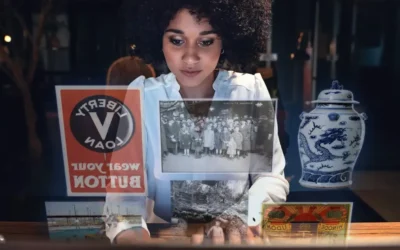Museum Digital Project Sustainability Hacks

Rachael Cristine Woody
Museum digital projects are typically long-term with multiple activities, phases, and deliverables.
Depending on your museum size, the team undertaking these digital projects can be multiple people across several department or it can be just you.
Either way, it’s important to cultivate sustainability around the work you perform in order to maintain your health and well-being as well as the success of the project. Last week we reviewed 3 Strategies for Museum Project Sustainability. This week we’re going to dive deeper into the detail of how we can put supports in place to alleviate amount of time and brain space museum digital projects can consume.
Strategies to Minimize the Work and Brain-Load
Museum digital projects have a lot of moving pieces and they can take both a lot of time and a lot of brain power. The following are a few strategies to help alleviate both of these issues and assist in making museum digital projects more sustainable for you.
1. Repeatable Data Capture: Create a spreadsheet template or form for repeatable data capture. There are several benefits to this approach:
- This helps to ensure that the data is gathered and entered consistently.
- This allows you to easily check your work because you can compare it to examples of previous work.
- Finally, spreadsheets can also be imported as data into CMS and similar databases which can save future-you work as well.
2. Optimize Your Wait Time: Identify periods of work where there’s waiting and get creative in how you can optimize your time.
For example: Digitization is a prime candidate for optimizing as it can take several minutes to perform a high-resolution scan. During this time the person scanning can perform data entry or research on the item that will come in handy for cataloging.
3. Batch Process: Batch related work together so that you lessen transition time both physically with project setup as well as mentally for your brain. Setting aside at least 2-3 hours at a time for a batch task can pay dividends than a more haphazard approach.
4. Protect Your Time: Block out and protect your project time in your work calendar. You have to get your work done at some point in the day and your productivity is seriously impacted each time you’re interrupted for a meeting. Blocking out space in your calendar will prevent people from booking you for meetings and will help guarantee blocks of time throughout the week where you can get work done.
Conclusion
The more sustainable you can make your workload the better your work product will be. But more importantly, prioritizing a sustainable approach to your work will help you get the important work done while also helping to protect your non-work time and well-being. Both of these elements—getting important work done and your well-being—are required for you to be successful at your job and life. Just remember, approaching your work by centering sustainability is a practice. It will take some trial and error for you to find a sustainable workflow, tools, and strategies that work for you. The important thing is, is that you continually try—you practice at it. And if you’re a manager, help your employees do the same.
Additional Reading
The Importance of Sustainable Museum Cataloging & How to Achieve It

Rachael Cristine Woody
If you’d like to learn more about this topic, register here for Rachael’s webinar, “Sustainable Project Management for Museum Digital Projects” on August 24, 2022. Rachael Woody advises on museum strategies, digital museums, collections management, and grant writing for a wide variety of clients. In addition to several titles published by Lucidea Press, she is a regular contributor to the Think Clearly blog and an always popular presenter.
Never miss another post. Subscribe today!
Similar Posts
How Archives Can Enrich Museum Collections Online
Staffed archives are in constant motion in their attempt to provide and broaden access to the archival collections.
How to Enhance Museum Collections Online with New Information
One of the wonderful things about museums is that the learning never stops. There are always projects, exhibits, and programs in development that serve as constant instigators of research.
How to Enhance the Museum Object Record with Immediately Available Information
This month’s series focuses on the enhancement of museum object data using “hidden” troves of information. Hidden is in quotes because the information exists and often is not hidden—it just hasn’t been gathered for inclusion in the museum Collections Management System (CMS).
Where the Gaps Live with Traditional Museum Object Cataloging
Standard museum cataloging leverages the usual set of fields that are considered best practice. We tend to refer to this information as “the tombstone information,” meaning it is clear and concise in communicating the “need to know” information.




Leave a Comment
Comments are reviewed and must adhere to our comments policy.
0 Comments